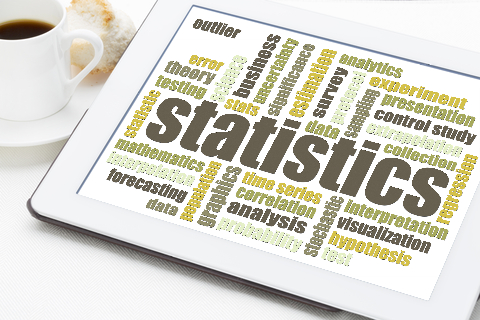Factors Our Statisticians Consider When Conducting a Z-Test
To determine whether results from a test are valid and repeatable or whether two population means are different when the sample size is large and population variance is known, one may require professional help to conduct a z-test statistic. The test statistic is useful in hypothesis testing and operates under the assumption of normal distribution of data. The z-test statistic calculation done by experts from our company is based on predetermined parameters such as the population standard deviation and variance. Although the z-test and t-test statistics are closely related, we correctly differentiate them and understand the circumstances under which we may use each. The z-test statistic is used appropriately for greater-than-30 samples under the central limit theorem.
The null and alternative hypotheses and the z-score, which is a number representing the count of standard deviations below or above the population means, must be stated before conducting the z-test. This article contains a detailed discussion of the factors we consider when providing help to conduct a z-test statistic for our clients.

Various factors and steps matter when performing a z-test on a data set. After making the decision to hire a statistician for a z-test statistic from our company, clients are assured of a correct and comprehensive process that yields accurate results. After stating the null and alternative hypotheses and determining the alpha level, we find the critical value of z and correctly calculate the z-test statistic. The comparison between the critical value of z and the test statistic determines whether we approve or reject the null hypothesis.
Despite the close relationship between the z and t statistical tests, our experts understand that the t-test is only used on small samples and operates on the assumption that the standard deviation is unknown. We are well-versed with the circumstances and conditions under which to use either the z-test or the t-test statistics on a data set. We serve the needs of researchers, students, and scholars from different fields and levels in academics and professions. Some of the factors we considered in our help to conduct a z-test statistic include:
1. The objective of conducting the z-test statistic
A z-test can be conducted on data that approximately follows a normal distribution for hypothesis testing. The test statistic can be performed on one sample, two samples, or on proportions to check whether the means for two large samples are similar or not when the variance is known. We, therefore, conduct different z-tests statistics for various purposes in research, including:
- Testing the null hypothesis against the alternative hypothesis on a given value of the population proportion.
- The testing of the hypothesis that two populations have the same proportion.
- Hypothesis testing on a specified value of the population means where the standard deviation is known and the sample size is equal to or greater than thirty.
- Testing hypothesis on a particular value of the population variance.
- Hypothesis testing of the equality between two population variances when the size of each sample is equal to or greater than thirty.
For each data on which we are hired to conduct z-test statistics, we must first understand the purpose that the researcher or student wants to achieve in the study and, therefore, select the type of z-test that best helps in accomplishing the goal.
2. The type of z-test statistic required for the given data
There are different types of z-tests that can be used to accomplish varying data analysis objectives in a study. These include:
- One-sample z- test
One-sample z-test is used to confirm if there is a difference between the sample and population means when the population standard deviation is predefined. The one-sample z-test can be a left-tailed test, a right-tailed test, or a two-tailed test.
- Two-sample z-test
The two-sample z-test is used to determine whether a significant difference exists between the means of two samples.
- Z-test for proportions
This type of statistical test is used to determine whether there are differences between proportions. The test statistic can be categorized into one proportion or two proportion z-tests.
We are keen to define the type of population parameters being measured, calculate, and interpret the z-test correctly. The z-test statistic done by experts from our company entails determining the type of tailed test that needs to be conducted and the type of test to which the z statistic belongs.
With our help to conduct a z-test statistic in a study, we choose the correct category of the test and apply the most appropriate z-test statistic formula depending on the parameters of the data at hand.
Using the correct test statistic formula, we perform a comparison between the z- statistic and the z critical value. The results of the comparison influence the decision of whether the null hypothesis is rejected or not. The z critical value separates the rejection region from the acceptance one in a distribution graph. We can only reject the null hypothesis if the z-test statistic falls in the rejection regions of the graph.
3. Availability of independent data points
When conducting the z-test statistical test in a study, it is our responsibility to ascertain whether the data points are independent of each other. Independent data points imply that they are neither related nor affect each other when the z-test is being conducted to accept or reject the null hypothesis in research.
Anyone wishing to purchase the services of a statistician for a z-test statistic can count on us for assurance of the best help. Our experts have all that it takes to correctly use the right formula to calculate an appropriate z-test score ensuring that measures such as the mean and standard deviation are determined prior to the use of the statistical test.
4. Nature of data distribution
A z-test statistic is used on large sample sizes that are equal to or greater than 30 and assumes a normal distribution when plotted graphically. The central limit theorem explains the tendency of large samples towards normal distribution.
The attributes that we consider to define a normally distributed data set include symmetry about the mean and a bell-shaped curve when represented graphically, the mean score being the maximum likelihood estimate(peak) of the distribution, and uncommon extreme values being located at the furthest left or right sides of the curve. Values obtained from the bell-shaped curve can be used appropriately with the right z-test formula to calculate z scores for use in hypothesis tests.
5. Sample size and selection criteria
For us to use a z-test on data, it is essential to ensure that sample sizes are equal to or greater than thirty. The data presented for statistical analysis should be randomly selected from the population of interest. A simple random sample is, therefore, ideal for conducting a z-test statistic. The sample size should be reasonable to gather enough evidence with regard to the population parameters of interest.
6. Compliance with the basic assumptions
For a data set to be feasible using a z-statistic, it must be compliant with the basic assumptions. The z-test assumes that the data approximately follows a normal distribution and that some measures such as the population mean and standard deviation are known prior.
The null and alternative hypotheses must be stated and critical values calculated before conducting the z-test statistic. With the large sample sizes in z-tests, the sample standard deviation can be used as an estimate of the population standard deviation in basic statistical analysis of data.

7. The statistical significance level of Z-scores
When conducting the z-test statistic on particular data, we calculate the z score whose numerical value indicates the standard deviation of the sample mean from the population mean. We determine the significance of the z-score using the p-value; the probability that the null hypothesis is true rather than by chance. If the p-value falls below the 0.05 threshold for a statistical significance level, the result is said to be statistically significant. It is also possible to convert the z-score to a p-value using either one-tailed or two-tailed hypotheses.
Carefully considering the above factors enables us to deliver the best help to conduct a z-test statistic to our clients. We are genuinely concerned about the success and excellence of our clients in their respective fields, thus, dedicating time and efforts to seeing their dreams come true. Our availability and accessibility are guaranteed on a 24/7 basis, hence, clients have the freedom of consulting, ordering services, inquiring, or tracking work progress at any time of their convenience.
Students and researchers from all fields and academic or professional levels who may wish to hire a statistician for a z-test statistic can rest assured of the best outcomes after ordering our services. The excellent customer support team and quality control experts ensure that the client is served at his/her terms. We strictly adhere to deadlines and comply with all the terms agreed upon, requirements, and instructions specified by the clients, thus, making us the ideal choice for students, scholars, and researchers for high-quality services and a delightful customer experience.





